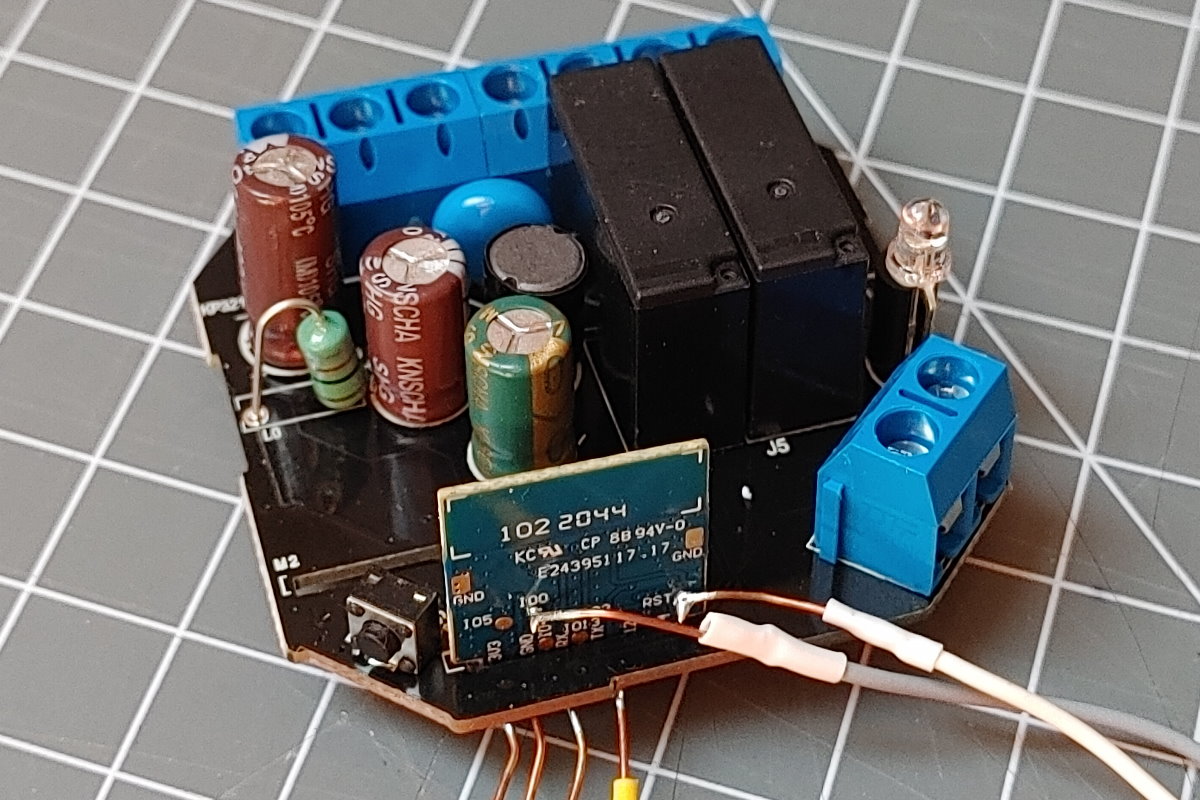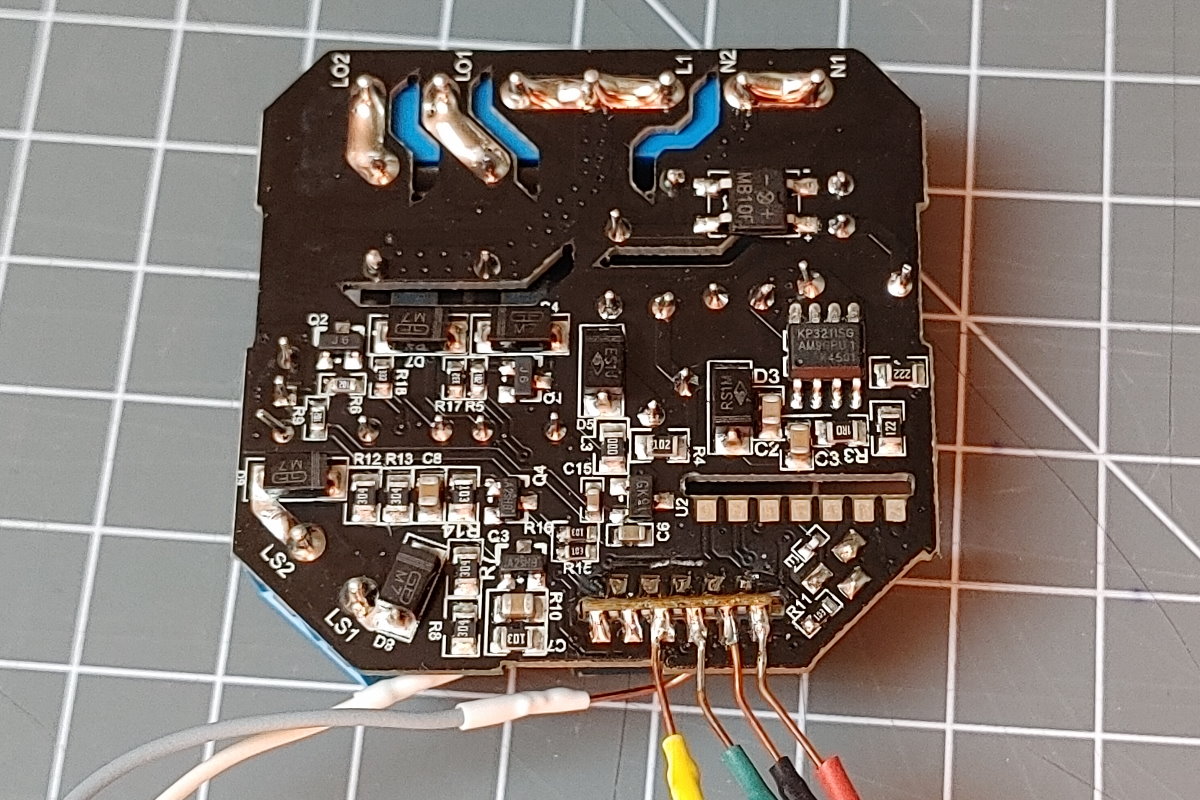Smart control for shades, blinds and curtains
The purpose of this smart device implementation is to automate existing shades to bring them in on several conditions. This can also used to control curtains or blinds that are typically controlled by 2 momentary switches.
The possibilities are
- bring shades inlate in the night (when forgot to to so)
- or in case of rain
- in case of too much wind
- open blinds in the morning
- shut down blinds in the evening
but to keep the existing wall switch in place enabled for easy manual controlling.
Choose the device
Because the space in the switch box is limited I choose to use one of the ESP8266 based devices with 2 relays. The one I choose also provides 2 inputs that can be given AC Power, very useful to keep a local switch functional.
Here you see the picture of a LoraTap SC500W that comes with some helpful descriptions on how to wire the motor and switch. The official product web site is here: https://www.loratap.com/sc500w-p0108.html

Important node
On the first sight the implementation seems to be more complex than required. This is is because of the fact that the two relays control a single motor. It must be ensured that it never happens that both directions are ON at the same time.
Warning
- This warning is serious.
- Stay away from devices with contact to mains voltage.
- Never handle this module when connected to the mains voltage as the contacts are not safe.
- Uploading firmware to devices that have contact to mains voltage is dangerous.
- DO NOT connect the any device to the mains during flashing or while using the serial interface.
- You may kill your computer and yourself.
- When you are making these kind of projects you really need to know what you are doing.
- I have warned you, do not blame on me.
Uploading firmware
tuya-convert - may not work
You can try to use a firmware upload without opening the switch using the tuya-convert utility that you can find at https://tasmota.github.io/docs/Tuya-Convert/. This may work when the firmware is of an older type. I got new ones where the tuya-convert approach did not work any more.
After opening the case you can see that a TYWE2S module made by Tuya is used inside that is also documented on https://developer.tuya.com/en/docs/iot/tywe2s?id=K9hhi0xr3f3ub, https://developer.tuya.com/en/docs/iot/wifie2smodule?id=K9605u79tgxug and https://tasmota.github.io/docs/Pinouts/#tywe2s.
On you can find all relevant signals on the connectors or at the back of the module so you can program it like a ‘Generic ESP8285 Module’ module. It uses a ESP8285 chip that has a ESP8266 processor + 1MByte Flash integrated.
Here is a picture on the board with attached wires for uploading:


GPIO Usage
The description for Tasmota at https://templates.blakadder.com/loratap_SC500W.html is helpful to check what GPIOs are in use for what function
| GPIO | Function |
|---|---|
| GPIO3 / RX | red LED, same as Serial0-RX. Don’t use while Serial adapter is in use. |
| GPIO4 | Switch1 (active LOW) |
| GPIO5 | Switch2 (active LOW) |
| GPIO12 | Relay1 (L1) |
| GPIO13 | Button1 (active LOW) |
| GPIO14 | Relay2 (L2) |
| AD | |
| GPIO1 / TX |
https://www.youtube.com/watch?v=qahdTG4TE-A
Blitzwolf BW-SS6 ???
https://templates.blakadder.com/loratap_SC500W.html
Configuration
{
"digitalin": {
"GPIO4": {
"title": "tap down",
"pin": "4",
"onlow": "switch/down?toggle=1"
},
"GPIO5": {
"title": "tap up",
"pin": "5",
"onlow": "switch/up?toggle=1"
},
"GPIO13": {
"title": "IN-GPIO-13",
"pin": "13"
}
},
"switch": {
"down": {
"title": "move down",
"onhigh": "value/m?value=1",
"onlow": "value/m?value=0"
},
"up": {
"title": "move up",
"onhigh": "value/m?value=2",
"onlow": "value/m?value=0"
}
},
"value": {
"m": {
"title": "motor",
"value": 0,
"min": 0,
"max": 2,
"onvalue": "map/m?value=$v"
}
},
"timer": {
"rst": {
"pulsetime": "8s",
"onoff": "value/m?value=0",
"title": "timer/rst"
}
},
"map": {
"m": {
"title": "map-output",
"description": "define output by value",
"rules": [
{
"max": "0",
"onValue": "digitalout/up?value=0,digitalout/down?value=0,switch/down?value=0,switch/up?value=0,timer/rst?stop"
},
{
"max": "1",
"onValue": "digitalout/down?value=1,digitalout/up?value=0,switch/down?value=1,switch/up?value=0,timer/rst?start"
},
{
"max": "2",
"onValue": "digitalout/down?value=0,digitalout/up?value=1,switch/down?value=0,switch/up?value=1,timer/rst?start"
}
]
}
},
"digitalout": {
"down": {
"title": "GPIO14",
"pin": "14"
},
"up": {
"title": "GPIO12",
"pin": "12"
}
}
}